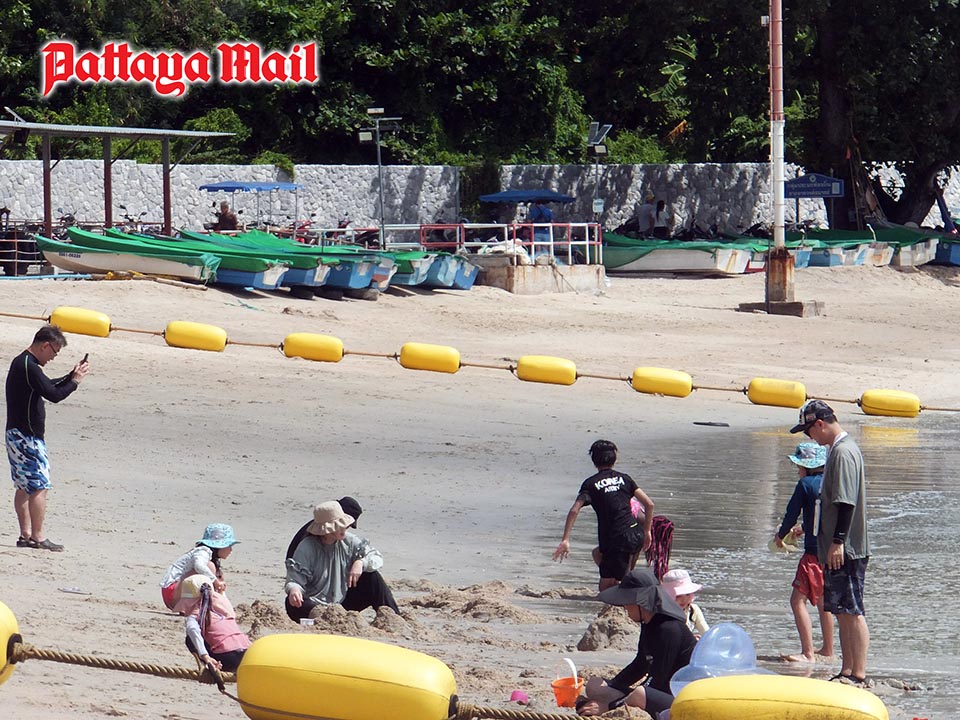
WWW.PATTAYAMAIL.COM
Thailand’s tourism recovery stalls amid supply chain challenges: lessons from Pattaya and beyond
Pattaya remains a key tourism hub, showcasing both the potential and challenges of managing infrastructure and visitor services amid fluctuating tourist arrivals. (Photo by Jetsada Homklin)
PATTAYA, Thailand – This year has truly been a tough one for Thailand’s economy. It started with the U.S. President imposing reciprocal tariffs on many countries, including Thailand, followed by tourist arrivals falling short of targets. Internal political issues, along with border tensions used as economic leverage, have further pressured the border regions unnecessarily.
The government has tried to address these urgent tourism and economic challenges by boosting domestic demand. However, digital platforms designed to support tourism have underperformed, crashing from day one.
Let’s pause and analyze what’s really happening:
The number of Chinese tourists coming to Thailand has drastically decreased. While officials attribute this to China’s economic slowdown, the reality is that domestic tourism within China is booming spectacularly, and outbound Chinese tourists reached 350 million trips in 2024—exceeding the pre-pandemic peak in 2019. Yet, only about 10 million Chinese tourists visited Thailand, indicating a clear shift.
In fact, Japan has surpassed Thailand as the top foreign destination for Chinese tourists. Thailand must acknowledge that Japan offers a superior tourism experience, combining world-class attractions, excellent infrastructure, and cultural appeal. Historically, Japan’s higher cost made it less competitive, but the strengthening Thai baht and weakening yen have reversed that. Moreover, Japan’s user-friendly digital ecosystem and efficient transportation, including convenient car rentals and exceptional rail services, make it a more attractive option for independent travelers.
Thailand cannot realistically compete directly with Japan in Asia on factors such as natural beauty, culture, cleanliness, hospitality, or proximity to major source markets like China, South Korea, and North America. Airlines, especially Chinese carriers, favor routes to Japan for better profitability.
Turning inward, Thailand’s slow tourism recovery post-pandemic partly reflects a conservative government approach. The pandemic accelerated digital transformation and economic shifts globally, but Thailand has not fully leveraged this to modernize its tourism supply chain—especially in secondary cities and emerging tourist destinations.
For example, public transport and logistics services remain inadequate for Chinese tourists and other independent travelers who rely on apps and shared mobility. Instead, Thailand continues to focus primarily on marketing campaigns by the Tourism Authority of Thailand (TAT), emphasizing demand generation while neglecting the supply side—such as infrastructure, accessibility, and sustainable tourism practices.
Thailand’s tourism product still fails to reflect environmental awareness and resource conservation, which modern travelers increasingly seek.
Safety concerns have also taken a toll. The 2018 Phoenix boat tragedy, where 40 Chinese tourists died, damaged Thailand’s reputation for maritime safety. Since then, repeated safety issues, kidnappings, and scams targeting Chinese tourists have surfaced. Reports of overpriced taxis, inflated food prices, and general scams circulate widely on social media, eroding trust.
Today, tourists no longer rely solely on official marketing; social media heavily influences perceptions. China’s rapid domestic development means many Chinese tourists now see Thailand as less modern and convenient than before, especially compared to improvements at home.
It is time for Thailand to develop its entire tourism supply chain to offer convenience and safety. For instance, Bangkok remains beautiful but struggles with odor problems from drainage. Secondary cities often lack clean public restrooms and reliable local transport—issues that independent foreign tourists find frustrating. While Thai tourists solve this by renting vans, foreign visitors face difficulties due to a lack of information and transportation options.
Waste management on beaches and tourist spots also requires urgent attention. Government agencies responsible for tourism must reform the entire value chain.
To build a sustainable tourism future, Thailand should pilot comprehensive supply chain improvements in 10 secondary destinations, such as Lampang, which boasts more attractions than Nan; Udon Thani with its famous red lotus bloom in January; Ubon Ratchathani with its natural beauty; and Phatthalung with the stunning Thale Noi wetlands. However, these places often lack secure boat access, clean restrooms, and basic infrastructure.
Private investment in medium-sized hotels and support for convenience stores to provide public restrooms are also necessary. Additionally, AI-powered tools can create seamless experience tourism itineraries, including logistics and local transportation info at the provincial level.
Community-based tourism development is often too narrowly focused. For smaller towns to grow as tourist hubs, they must work closely with local administrations to build strong urban infrastructure, support nighttime attractions, and develop surrounding rural tourism.
Pattaya, as one of Thailand’s major tourist destinations, offers a useful comparison. It benefits from relatively better infrastructure, more frequent flights, and extensive services catering to international tourists. However, even Pattaya faces challenges like overcrowding, environmental stress, and fluctuating tourist numbers affected by currency strength and global trends. Pattaya’s ongoing efforts to upgrade services, diversify attractions, and improve safety standards illustrate the kind of proactive management needed in secondary cities to revive tourism growth.
0 Comments
0 Shares
14 Views


